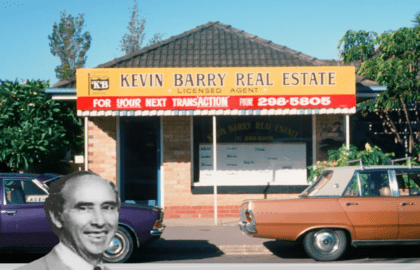Policy makers, including the Reserve Bank and Federal Treasury, are increasingly looking towards the housing market and housing construction to take up some of the economic slack as the economy transitions away from relying on infrastructure spending in the mining sector. For a sector that seems to be increasingly regarded as the ‘White Knight’ for our federal economy, there wasn’t a great deal of attention or detail in the Federal Budget that explains what, if any, support the Federal Government is prepared to provide to ensure the housing sector will achieve the growth target of 5.0% for the 2013/14 financial year and 5.5% in the 2014/15 financial year.
From the budget paper:
Just as the resources boom will transition from its investment phase to the production phase over the next two years, the broader Australian economy is also expected to begin its transition to non-resources drivers of growth. Growth in the non-resources parts of the economy is expected to be underpinned by solid growth in household consumption, a recovery in the housing sector and a modest recovery in business investment outside the resources sector. While this transition may not be seamless, Australia starts from a position of strength and resilience.
…
There are also early signs of a recovery in the housing sector. In the December quarter National Accounts, dwelling investment recorded its second consecutive quarter of positive growth, growing at its strongest quarterly rate in over two years. After a decade of lacklustre growth in housing construction, conditions are favourable for a sustained recovery. Low interest rates, favourable demographics, low vacancy rates, rising house prices and high rental yields are all expected to support demand in the housing construction sector over the forecast period.
Industry groups were seeking guidance or support around incentivising prospective buyers, reforms relating to infrastructure charges to encourage more development, and support for training and jobs for housing construction and related industries. None of these issues were addressed. There was no guidance on population growth targets either, which has featured in earlier budgets.
The themes that were very relevant for the housing market were:
Pensioners who have owned their family home for at least 25 years can now sell their home and direct the proceeds of the sale into a special banking account that is exempt from pension means testing. The dollar amount of the deposit is capped at $200,000 and the means testing exemption expires after ten years. The other string attached to this pilot policy is that the home owner must be downsizing to what the budget describes as a ‘retirement village or granny flat’ (those people downsizing into aged care accommodation aren’t eligible for the pilot). Both of these terms are open to interpretation, so clearly before the pilot kicks off in July 2014 there will need to be a lot more clarity around what a retirement village or granny flat is. The other point of little clarity was around the tenure of ownership. This policy states that the home must have been owned for at least 25 years. Based on sales over the past twelve months, less than 5% of all dwellings that transacted were owned for 20 years or more (I don’t have the 25 years or more figure at hand… but it is likely to quite a bit lower than 5%). Most home owners hold their home for about 7-9 years before selling – either for upgrading or moving for work reasons. The lifecycle of property ownership suggests there aren’t going to be a large number of home owners who have held the same home for 25 years or more which suggests to me this pilot may be a bit of a dud unless there are some tweaks or clarifications to the rules.
Non Residents buying Australian property with a price tag of more than $2.5 million will be required to pay a 10% withholding tax. The new tax for non-resident buyers aims to insure the risk of capital gains flight. Basically, the Government is collecting a bond from the purchaser at the time of sale in case they ‘forget’ to pay capital gains tax when they ultimately sell. The new tax essentially makes premium properties ten percent more expensive for foreign buyers, however considering the new tax only applies to properties worth more than $2.5m, the effect will be confined to the premium sector of the housing market. It may be enough to put off some foreign buyers, however it is likely many will simply comply with the new tax as another cost of purchase.
There is a BIG infrastructure spend in the budget that is particularly relevant to areas of Queensland and Melbourne. Infrastructure spending typically has a very positive effect on local property markets that directly or indirectly benefit from the new infrastructure. An additional $24 billion in infrastructure spending through to 2018/19 was announced within the budget as part of the Nation Building Program. The key projects to receive federal funding were:
- $4.1 billion is devoted to upgrading the Bruce Highway along Queensland’s eastern seaboard
- $3 billion is being dedicated to the Melbourne Metro Rail program
- $1.8 billion is being provided for Sydney’s M4 and M5 extensions
- $715 million is provided for Brisbane’s Cross River Rail project
- $500 million for the Midland Highway in Tasmania
- $448 million for the South Road upgrade in Adelaide
- $418 million for the Swan Valley Bypass in Western Australia
- $400 million is dedicated to Sydney’s F3 to M2 connector project
The string that is attached to the funding pledge was that State Governments need to match the Federal spend and form alliances with the private sector to deliver the projects. Considering the limited capacity of most state budgets, matching the proposed spend might be one of the biggest challenges in seeing this funding come to fruition.
The Budget announcement, as it relates to the housing market, is pretty much steady as she goes. The housing market recovery this time around is much more organic than what we saw in 2009 and 2010 (more free from Government stimulus) which is arguably a healthy state of affairs.
A lot of faith is being placed on the housing sector and to date there has been firm evidence that buyers are returning to the market and values are starting along a recovery path. What is not as evident is how the construction sector is going to respond. Dwelling approvals are up almost 4% over the year but the month-to-month data has been volatile and overall growth could be described as sluggish at best. One thing that is looking quite certain is if we are to see a sustained improvement in housing investment a low interest rate environment is likely to be a necessity. Low rates are here to stay for the foreseeable future.
Click here for original article.
Follow the Christies Beach real estate blog for more interesting articles








